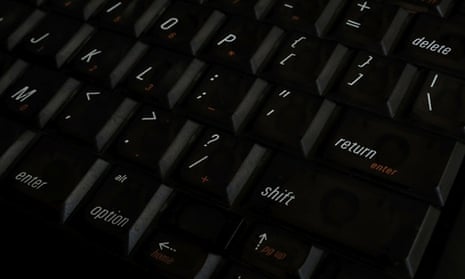Robot fraudsters account for nearly a quarter of “people” watching online video ads and more than one in 10 display ads, according to the largest investigation to date into the digital advertising industry.
A report released on Tuesday found big-name companies including Ford, Intel, MasterCard and Wendy’s were scammed by online fraudsters, many linked to organised crime, who have hacked the computers of millions worldwide.
White Ops, a New York-based web security investigator which compiled the report for the Association of National Advertisers (ANA), calculates advertisers will lose $6.3bn in 2015 to so-called bot fraudsters.
Bot fraudsters infect unsuspecting computer users with malware – malicious software. Sophisticated botnets mimic the behaviour of online consumers, pausing at ads, watching videos, switching websites and even putting items in shopping carts. This fake traffic is often bought by publishers who are unaware their audience is fake.
The survey monitored 181 online campaigns from 36 companies including Anheuser-Busch InBev, brewer of Budweiser and Stella Artois, Kellogg’s and Nestlé. Some 5.5bn ad impressions were monitored over 60 days. The survey found fraud everywhere and on most of the world’s major websites.
- Bots accounted for between 0.3% and 63% of video ad views – leaving an average weighted view of 23%.
- Display ads had a weighted average of 11% bots, with a range of 0.8% to 32%.
- Most of the activity occurred on real websites. Of the nearly 3m sites covered in the survey, just thousands were completely bogus.
- White Ops estimates monetised audiences at those sites were inflated by between 5% and 50%.
- Traffic from old web browser Internet Explorer 6 was 58% bot.
- The peak activity time for bot fraud was between midnight and 7am.
The ad fraud is far from a victimless crime, said White Ops co-founder Dan Kaminsky. Advertisers lose money, sites that don’t pay for traffic lose revenue and bot hackers are often in the pay of organised crime, with the proceeds funding other more criminal activities. The fraud also leaves those hacked vulnerable to other attacks.
Close to a third of the world’s computers are now infected with some sort of malicious software, or malware, according to the Anti-Phishing Working Group.
Cyber security has often focused on how criminals have targeted people, said Kaminsky, but the better question was, why? “Why are people hacking grandma’s computer? How interesting can her email be? The answer is hack grandma, click a billion ads make a million dollars,” he said. “The scope of ad fraud is the driver for compromising home PCs. This is the big money maker.”
The bot operators run two main types of scam, according to White Ops. In the first they set up fake websites and send fake clicks to them. “The bot traffic looks like legitimate human traffic,” said White Op’s co-founder Michael Tiffany. “You can make your bogus website look popular and pocket a bunch of money.”
White Ops had expected this to be the largest share of the bot scam market. But the survey also found a surprising amount of bot traffic on big-name internet sites. In fact, a quarter of all the bots found in the study were on the world’s top 1,000 websites.
The study found “sourced traffic” – an ad industry term for paid views bought by publishers – was on average 52% bots. “Bot traffic is happening even on premium advertising buys that go to premium websites,” said Tiffany.
Bill Duggan, group executive vice-president of the ANA, said: “The survey confirms a deep, dark fear that people know is out there.” He said publishers might benefit now from higher traffic and higher rates from buying bots but in the long term the industry would suffer. “Digital is supposed to be this great new accountable thing, but if we know it’s not reaching the right people that money is wasted,” he said.
Tiffany said the criminals were following the money and that was why video ads were most vulnerable to bot activity. Video is more expensive than display advertising and is growing fast. Because prices are higher, criminals can make more money with a smaller number of bots. The malware needed is also much more sophisticated.
“Video ads plug into an ecosystem that has been in operation for decades based on TV,” said Kaminsky. “There is a high expectation of volume. How do you get that many people to show up?”
US law enforcement has become increasingly interested in bot activity. In 2011 it closed an Estonia-run operation responsible for more than 4m infected PCs. The operation, known as “Ghost Click”, netted $14m and has led to two guilty pleas so far, with more cases expected.
But so far ad networks and publishers have not shown a concerted effort to tackle the issue. “In this crime when it succeeds, no one notices, in fact the numbers go up,” said Tiffany. “Maybe you even get a bonus.”

Comments (…)
Sign in or create your Guardian account to join the discussion